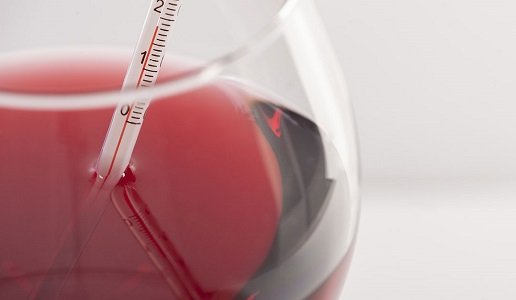Knowing the right serving temperature for a wine is not just a matter of "looking good." Temperature influences how the organoleptic characteristics of that particular wine are perceived.
That of wine serving temperatures is a topic, in my opinion, that is little covered and much more important than people think. I begin with a little illustrative story. Giorgio Grai, who was a famous South Tyrolean winemaker and winemaker, was invited by a restaurateur to present two of them at an evening organized for him. A Santa Maddalena and a Pinot Noir. Due to weather reasons he could not go, he sent the wines but only one of the two wines arrived, he had made a mistake in sending them, and it was the Santa Maddalena. The worried restaurateur phoned him and he told him to be calm. “Use two different glasses, one larger, in the smaller one serve the wine a little cooler. In the end, the first one will look like a Santa Magdalena, which it really is, and the second one will be a Pinot Noir. No one will notice that it is not.” Things obviously went as he had planned.
In France we are often told that we Italians drink red wines too hot and white wines too cold, another thing that is quite true. In many restaurants the “room temperature” is not that of the cellar, as it should be, but that of the dining room, at least ten degrees higher. All this affects, just as Grai argued, the perception of wines. In a nutshell, cold enhances acidity and makes the tannins seem harder. Warm enhances alcoholicity and softness. Frost numbs the taste buds, so drinking, for example, a Champagne that is too cold means not feeling its organoleptic characteristics.
Then there are the pairing issues. A wine that is too cold with very hot food is not at all advisable, unless you want to give your tongue and palate a “Scottish shower.” And so on.
But what would be the recommended temperatures? A sparkling wine never below 6 degrees. A white between 10 and 14 degrees depending on its complexity. An orange around 14-16 degrees, because there is tannin that needs to be softened a bit. A light red between 14 and 16 degrees (in Burgundy they serve most wines at that temperature). No more than 20 degrees for a red. Between 6 and 10 degrees for sweet wines, a little more for “oxidative” Marsala-type wines. The more expressiveness and olfactory complexity there is, the higher the serving temperature can go. Then we need to be careful about alcoholicity, which results in pseudo-caloric sensations. If a wine has a lot of alcohol, it is good to serve it a little cooler. An important red at 16-18 degrees, no more, for example.
What needs to be enhanced is the correct relationship between hardness and softness, between acidity and body, and the best possible olfactory expression in relation to the different types of wines. Of course, then you can play around, as Grai did that time, and I am sure that in blind tasting one wine served in succession at different temperatures would not be easily recognized as such. Try it and see.





